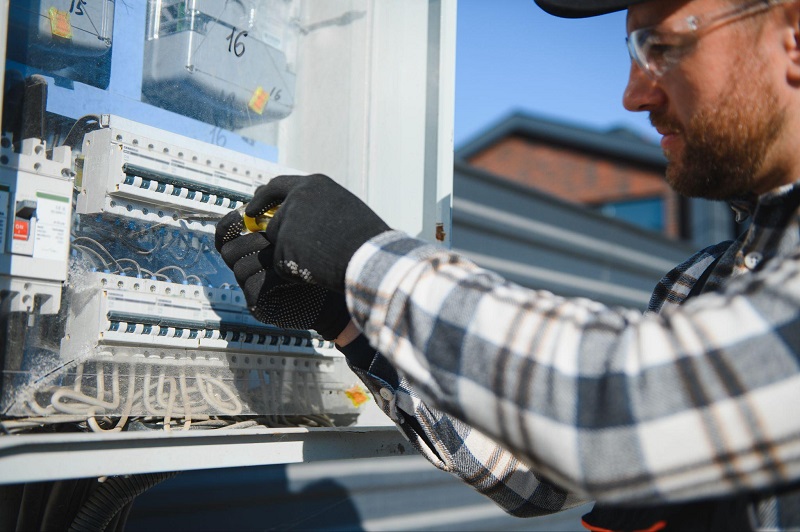Comfort Outdoors Begins with Thoughtful Design
A patio or balcony becomes more than just a space when comfort is given priority. Creating a relaxing and functional setup outdoors involves much more than placing chairs around a table. It is about shaping an environment that brings the ease of indoor living outside. When done right, a sofa, a few select furnishings, and the right rugs can turn any outdoor area into a place you want to spend more time.

Choose Sofas That Match Lifestyle and Weather
Not all seating works in an outdoor setting. The right sofa should offer comfort, resist wear, and support your lifestyle. It becomes the heart of your outdoor zone, setting the mood and defining where people gather.
Frames built from powder-coated metals or treated hardwoods last through changes in weather. Cushions should be thick, breathable, and covered with water-resistant fabric. Choose a size that suits your space. In compact areas, a two-seater works well. For bigger zones, a corner or modular sofa creates a lounge-like feel.
Design details matter too. Low arms make it easier to stretch out. A deep seat adds comfort for long conversations. When you pick a sofa built for daily use and weather changes, the rest of the setup naturally falls into place.
Use Rugs to Ground and Connect Each Element
Outdoor rugs are often overlooked. But they are essential to building a cohesive space. They do more than cover the floor. They define areas, soften hard surfaces, and bring color or texture into the mix.
The best rugs for outside are made from durable materials like polypropylene or recycled synthetics. These resist water and dry quickly. Choose a size large enough to sit under your sofa and coffee table. This creates a clear visual frame and keeps furniture from floating awkwardly.
Keep patterns and colors balanced with your furniture. A patterned rug can bring energy if your sofa is neutral. A solid rug in earthy tones helps calm a more colorful layout. Texture can also be used to make the space feel layered and finished.
Support with Furnishings That Add Value
Once your seating is in place, supporting pieces complete the picture. Tables, storage benches, and accent items make your space easier to use and more enjoyable. The trick is choosing pieces that do their job without taking over.
When adding outdoor furniture, keep the following points in mind:
-
Choose surfaces that clean easily with a cloth or hose
-
Pick items with protective coatings for long life
-
Use storage benches or multi-purpose tables to reduce clutter
-
Match finishes across furniture for a calm and unified look
-
Avoid bulky pieces that break the visual flow
-
Choose designs that feel open and moveable
-
Stick to simple shapes when pairing with bold or textured rugs
Furnishings should make daily use smoother. Whether it is a place to put a drink or somewhere to keep extra cushions, every item should feel useful.
Bring in Light and Texture with Accessories
A strong layout deserves thoughtful accents. Lighting extends the usability of the space beyond daylight hours. Use standing lamps, wall lights, or table lanterns that cast a soft glow. This not only sets a calm mood but also increases visibility and safety.
Textiles add depth. Outdoor throws, cushions, and even extra rugs help make the space feel more personal. Accessories like planters, trays, and stools can provide visual interest without clutter. Choose natural materials like wood, ceramic, or rattan to soften hard surfaces and echo the tones of nature.
The goal is to create balance. Nothing should feel forced. Add what makes the space easier to enjoy or better suited to your habits.
Plan for Real Conditions and Ongoing Use
An outdoor setting faces sun, rain, dust, and wind. That is why low-maintenance materials matter. But design should also support easy care.
Cushions should have removable covers. Tables should be smooth enough to wipe down without staining. Rugs should dry fast and be easy to shake out. Store delicate items when not in use. Covers help protect larger furniture when rain is expected.
Avoid placing your sofa directly against walls. Allow a few inches for airflow. This helps prevent moisture buildup and improves durability. Taking these small steps helps the space stay clean, usable, and inviting.
Create Flow with Flexible Layouts
The best outdoor spaces adapt to your routine. A good design supports more than one arrangement. A sofa that separates into sections or a lightweight bench that moves easily helps you shift the layout depending on weather or guests.
Open space around furniture encourages movement. Avoid tight corners. Make sure people can walk across the area without squeezing through gaps. Use smaller furnishings to fill in where needed. Leave room for air and light to reach every part of the space.
If your outdoor area serves more than one purpose—relaxing, eating, working—create zones with layout, lighting, and rugs. This keeps things organized and calm.
Design That Feels Intentional, Not Temporary
An outdoor space should feel as settled and polished as your indoor rooms. That only happens when each item fits into a larger plan. Your sofa should invite rest. Your rug should connect all pieces visually. Every bit of outdoor furniture should support function without overwhelming the area.
Avoid filling the space just to fill it. Choose fewer but better pieces. Let every item have a reason to be there. That approach creates clarity. It also gives you room to grow or adjust in the future.
Final Reflection: Comfort Is the Core of Outdoor Living
Turning a patio, balcony, or terrace into a place of ease starts with the right furniture. The right sofa offers rest. Well-placed rugs build warmth and structure. Functional outdoor furniture adds support and helps you live well outside.
When each element works together, the space feels complete. It reflects not just good design but real life—uncomplicated, thoughtful, and welcoming.









